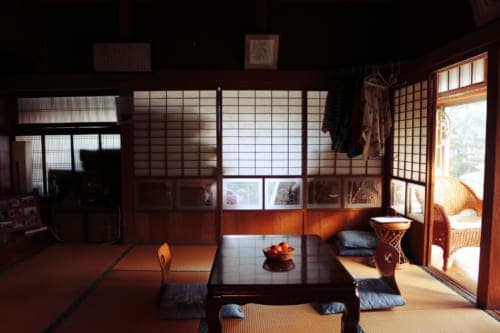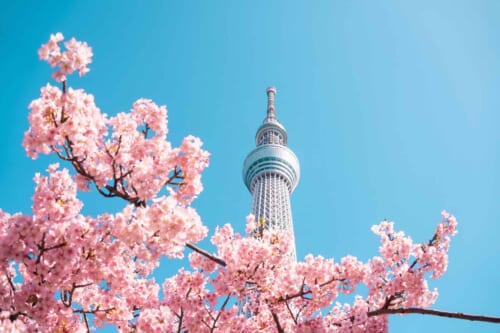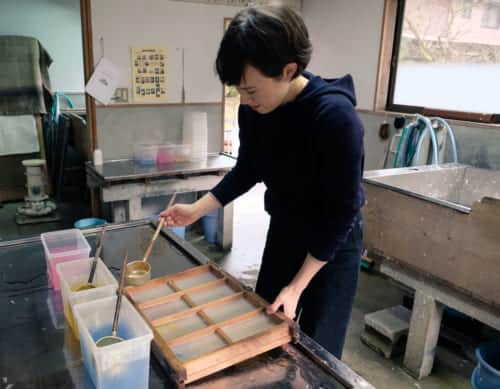If you have ever been to Japan, you may have noticed short curtains hanging at the entrance of shops and restaurants. These are noren (暖簾), traditional Japanese fabric dividers that are used as indoor and outdoor curtain decorations. They are part of the scenery of Japanese streets and everyday life. You can see them in many colors and styles all around Japan. Let’s learn together the history and some facts about noren.
What’s a Japanese Noren?
A noren is a short curtain that often hangs in the entrance of shops and restaurants as a signboard. The fabric is divided into two or several pieces so customers can pass through easily. Indeed, we can see it on some of Heian’s period drawings (794-1192). In the past, it was used as an entry curtain to protect Japanese houses against the climate, such as the cold, sun, wind, and dust. In private homes, noren often displayed the shield or “crest” of the family owners. Nowadays, it’s mostly a decoration with a variety of styles, sizes, colors, and materials. If we look closely, we can see some regional differences that date back to the time when Kyoto was the capital of Japan. For example, the Kansai region normally hides the bar holding these curtains, whereas we can still see it in the Kanto region.
The Different Sizes and Uses
Typically, there are four different model sizes of noren depending on its use.
First, the mizuhiki noren, which is very short, is only used as a decoration and is unrelated to the shop type.
Next, the hiyoke-noren is between 1.6 and 3 meters long and serves as a signboard and a sun protector.
Then, the han-noren (“han” means half) is 56.7 centimeters long and is the most used size. Its purpose is to allow easy access to the shop and reveal a bit of the shop interior to passersby. We can see it at the entrance of a sento public bath, cake shop, sushi restaurant, soba, or ramen shop.
The last one is the naga-noren (“nagai” means long) which is 1.6 meters long and its purpose is to hide what there are behind and to cut the sunlight.
The Traditional Meanings Behind Its Colors
Colors have always had different meanings between countries and cultures, and in the same way, noren traditionally had a color code too. Blue indigo was used in restaurants and clothes shops because ai-zome indigo dying is well-known to be a natural repulsive for insects. Red used to appear in Hanamachi (花街), meaning “flower quarters,” and acted as signposts to the geisha neighborhood. White was used for grocery’s, drugstores, and candy shops to match the color of white sugar. Brown orange was used for tobacco, flowers shops, and drugstores as well.
Nowadays, the different colors are no longer relevant.
Where Can I See Japanese Noren?
Everyday life provides lots of opportunities to see noren in Japan. It pops up around shops and restaurants during their opening times and often displays the business name and even an image of what they sell there.
A public bathhouse called sento have an easily identifiable noren because it displays the Japanese hiragana character, ゆ (‘yu’), meaning “hot water.” Inside, there are additional curtains that display the segregated women’s (女) and men’s (男) baths. Sentos usually displays seasonal designs that change throughout the year. You may also see this type of noren in hotels to indicate baths and hot spring entrance.
This sento entrance indicates the men’s bath (男) This sento entrance indicates the women’s bath (女)
On Naoshima, an art island well-known for its museums and the several artworks during Setouchi’s International Art Festival, are also known for their original, beautiful noren as well.
Where Can I Buy Japanese Noren?
In Japan, there are specialized shops for buying noren, and are a great souvenir to decorate your home with a Japanese touch. Usually, shops and restaurants ask for custom-made designs. To find a noren shop, search for the kanji (暖簾) in Google Maps.
You can also find online sites selling several models. For example, Nippon Craft or Goods from Japan offer beautiful traditional and modern designs inspired by Japanese culture.
As you can see, despite the modernity of Japan, noren still has a place in Japanese culture and in the everyday life of Japan. In large city centers, it is not rare to see these Japanese curtains at the entrance of buildings, thus another witness to the cohabitation of tradition and modernity in Japan.










No Comments yet!